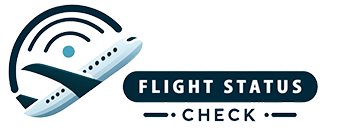The AA1429 Flight Status: A Comprehensive Guide
The AA1429 flight, operated by American Airlines, is a popular route for both business and leisure travellers. As with any flight, it is important to stay updated on the status of AA1429 to ensure a smooth and stress-free journey. In this article, we will discuss everything you need to know about the AA1429 flight status, including interesting details that will keep you informed and engaged.
AA1429 Flight Route and Schedule
The AA1429 flight typically operates between major airports in the United States, such as Los Angeles International Airport (LAX) and Dallas/Fort Worth International Airport (DFW). The flight schedule can vary depending on the season, so it is crucial to check the latest information from American Airlines to confirm the departure and arrival times.
The aircraft used for the AA1429 flight is often a Boeing 737-800, a popular model known for its reliability and comfort. The flight duration is approximately 3 hours and 30 minutes, making it a relatively short journey for passengers.
Understanding AA1429 Flight Status
The AA1429 flight status refers to the current information about the flight, including its departure, arrival, and any potential delays or cancellations. This information is crucial for passengers, as it allows them to plan their travel arrangements accordingly and avoid any potential disruptions.
There are several ways to check the AA1429 flight status, including using the American Airlines website or mobile app, contacting the airline’s customer service, or utilising third-party flight tracking services. It is recommended to check the flight status regularly, particularly on the day of departure, to stay informed about any updates or changes.
Common Reasons for Flight Delays or Cancellations
Flight delays and cancellations can occur for various reasons, ranging from adverse weather conditions to technical issues or air traffic control restrictions. Understanding the common causes of disruptions can help passengers anticipate potential challenges and make informed decisions about their travel plans.
Adverse weather conditions, such as thunderstorms, heavy snow, or fog, can lead to flight delays or cancellations for safety reasons. Airlines may also experience operational challenges, including crew scheduling issues, aircraft maintenance requirements, or unexpected logistical problems, which can impact the flight schedule.
Additionally, air traffic control restrictions or airport congestion can contribute to flight delays, particularly during peak travel times or in highly congested airspace. While these factors are beyond the control of the airline, they can significantly affect the punctuality of the AA1429 flight and other flights within the region.
Impact of Flight Status on Passengers
The flight status has a direct impact on passengers, influencing their travel experience and overall journey. For instance, a delayed or cancelled flight can disrupt passengers’ connecting flights, ground transportation, hotel reservations, and other travel arrangements, causing inconvenience and potential financial implications.
Passengers who stay informed about the AA1429 flight status can take proactive measures to mitigate the impact of potential disruptions. This may include rebooking or changing flights, arranging alternative travel options, or seeking compensation or assistance from the airline in the event of significant delays or cancellations.
Moreover, staying updated on the flight status can provide peace of mind for passengers, allowing them to plan their time effectively and reduce the stress associated with uncertainty or unexpected changes to their travel plans.
Tips for Managing Flight Delays and Cancellations
In the event of a flight delay or cancellation, passengers can take several steps to manage the situation and minimise the inconvenience. Firstly, it is essential to stay updated on the AA1429 flight status through official channels, such as the airline’s website or customer service, to receive accurate and timely information.
Passengers should also consider their rights and entitlements in the event of flight disruptions, such as compensation for eligible expenses, alternative travel arrangements, or assistance with accommodation and meals as required by airline regulations and passenger rights legislation.
Additionally, flexibility and proactive communication with airline staff can significantly influence the outcome of flight disruptions, as passengers may have the opportunity to rebook or reschedule their flights, seek alternative routing options, or receive support from the airline’s customer service representatives.
Overall, being prepared and informed about the AA1429 flight status can empower passengers to navigate potential challenges with confidence and resilience, ensuring a smooth and efficient travel experience.
Technology Advancements in Flight Tracking
In recent years, technological advancements have transformed the way passengers track and monitor flight status, providing real-time updates and predictive insights to enhance the travel experience. Mobile apps, flight tracking websites, and digital platforms offer intuitive interfaces and comprehensive information about the AA1429 flight and other flights worldwide.
Furthermore, the use of advanced satellite-based systems and aircraft communication technologies has improved the accuracy and reliability of flight tracking, enabling passengers to access detailed information about their flight’s trajectory, altitude, speed, and estimated arrival time with unparalleled precision.
These advancements not only benefit passengers but also enhance operational efficiency for airlines, air traffic management, and airport authorities by enabling data-driven decision-making and proactive management of flight operations.
The Future of Flight Status Monitoring
Looking ahead, the future of flight status monitoring is poised to evolve further with the integration of artificial intelligence, machine learning, and data analytics. These technologies will enable airlines and passengers to access predictive insights about flight status, anticipate potential disruptions, and proactively manage travel plans with greater confidence and convenience.
Moreover, the widespread adoption of immersive technologies, such as virtual reality and augmented reality, may revolutionise the way passengers interact with flight status information, offering dynamic and engaging experiences that enhance situational awareness and travel planning.
In conclusion, the AA1429 flight status is a critical aspect of the travel experience for passengers, influencing their journey and overall satisfaction. By staying informed and prepared, passengers can navigate potential challenges with resilience and confidence, ensuring a smooth and efficient travel experience. With the continued advancements in technology and data-driven solutions, the future of flight status monitoring holds exciting possibilities for enhancing the travel experience and empowering passengers with actionable insights and predictive capabilities.

Leave a Reply